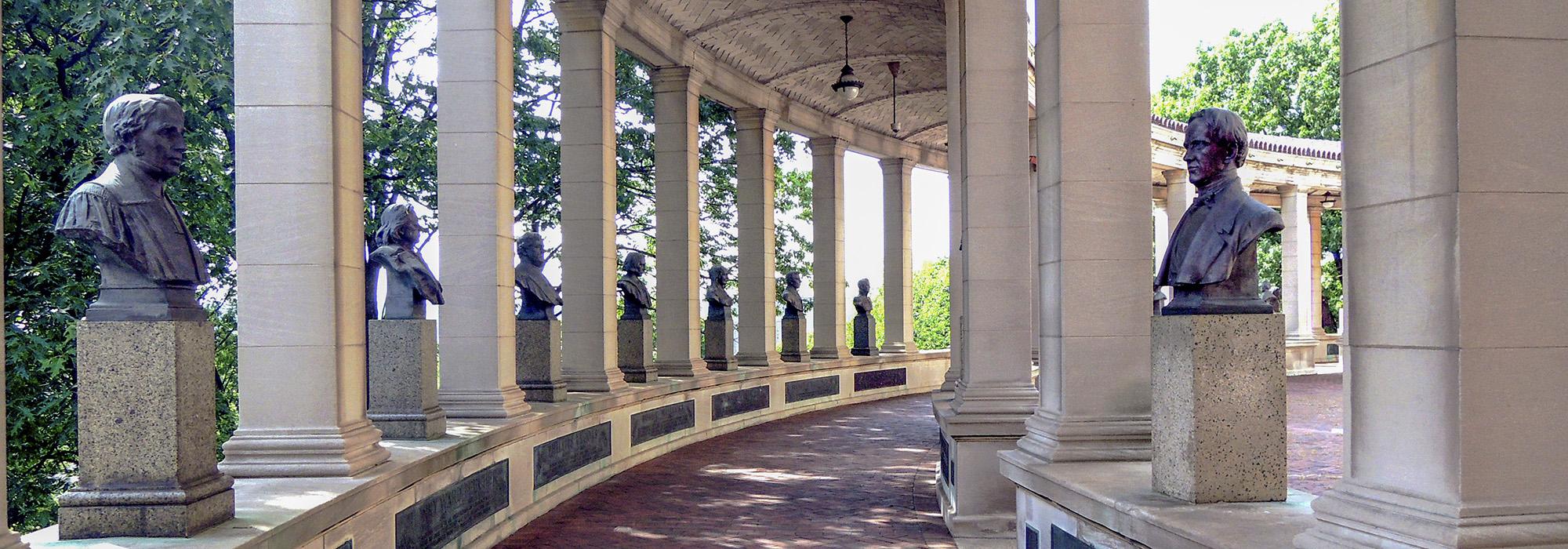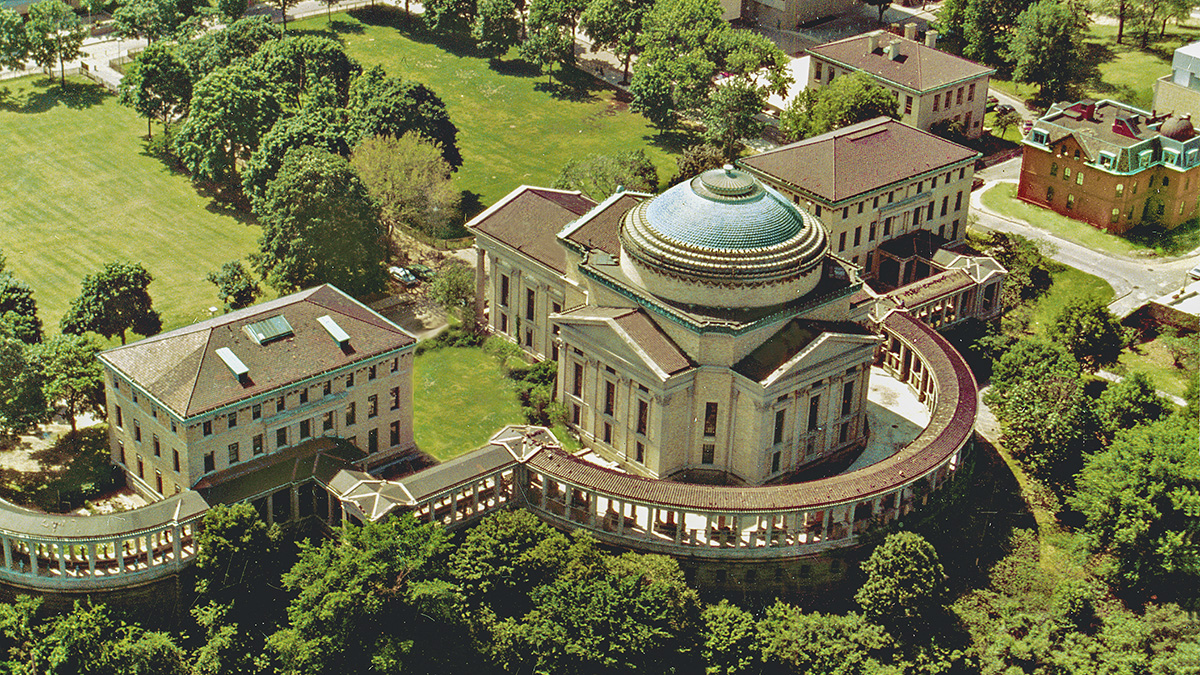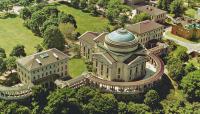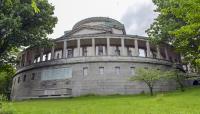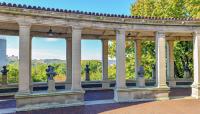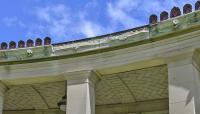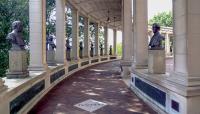Landscape Information
Begun in the early 1890s with the purchase of the Mali Estate by New York University (NYU), the 45-acre site enabled NYU to create a campus of monumental buildings and open lawns at a time when much of the neighbourhood around NYU’s buildings in Greenwich Village consisted of crowded tenements and factories. Emphasizing the campus’ hilltop location overlooking the Harlem River, the site was named University Heights. Designed in the Beaux-Arts style by architect Stanford White, of the renowned firm McKim, Mead & White, the master plan comprised several buildings arranged around a quadrangle with the centerpiece being Gould Memorial Library, which features an iconic dome flanked by two halls. A preliminary landscape plan by Calvert Vaux in 1894 was likely unimplemented; a series of plans and correspondences from 1912 to 1923 indicates the likely involvement of Frederick Law Olmsted, Jr., and the Olmsted Brothers firm.
Designed in 1900 as an addition by White, the Hall of Fame for Great Americans encircles the rear façade of Gould Memorial Library, linking it to the flanking buildings on either side. Positioned on the Bronx’s highest natural point, the 630-foot-long, ten-foot-wide, open-air colonnade is built in an eclectic Roman style and offers sweeping panoramic views ranging from Upper Manhattan to the New Jersey Palisades. The Hall houses a permanent exhibition of 96 busts of great Americans. In 1956 Marcel Breuer was commissioned to design a comprehensive master plan for the campus, ultimately adding five structures including Begrisch Hall, built with exposed reinforced concrete and featuring a pair of sloping cantilevers that appear to defy gravity. The Hall of Fame for Great Americans was listed in the National Register of Historic Places in 1979, and the campus of Bronx Community College was designated a National Historic Landmark in 2012.



